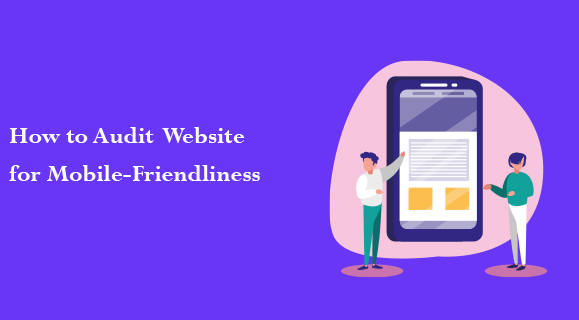Let’s be real if your website isn’t mobile-friendly, you’re losing visitors faster than you can say “bounce rate.” In today’s fast-paced digital world, most people browse on their phones, and if your site isn’t optimized for mobile, they’ll leave in seconds. But don’t worry! That’s where a mobile-friendliness audit comes in.
Wondering how to audit your website for mobile-friendliness? You’re in the right place! This guide will walk you through everything from testing tools to fixing common problems so your site can shine on any device. Ready to dive in? Let’s go!
Why Mobile-Friendliness Matters More Than Ever
Before we jump into the audit process, let’s talk about why this even matters. A mobile-friendly website:
- Improves user experience – Nobody likes zooming in and out just to read text.
- Boosts SEO rankings – Google prioritizes mobile-friendly sites in search results.
- Increases conversions – A smooth mobile experience encourages visitors to stay and take action.
- Reduces bounce rate – If your site is hard to navigate on a phone, people won’t stick around.
Still not convinced? Over 60% of all web traffic comes from mobile devices. If your site isn’t optimized, you’re missing out—big time!
How to Audit Your Website for Mobile-Friendliness
Now, let’s get to the good stuff! Follow these steps to check if your website is truly mobile-friendly and fix any issues that might be lurking in the background.
1. Use Google’s Mobile-Friendly Test
Google offers a free Mobile-Friendly Test that gives instant feedback on how well your site performs on mobile devices.
How to use it?
- Go to Google’s Mobile-Friendly Test.
- Enter your website URL.
- Click “Test URL” and wait for results.
If your site passes, great! If not, don’t panic—Google will show you exactly what needs fixing.
2. Check Your Site on Different Devices
Automated tests are great, but nothing beats real-world testing. Open your site on:
- A smartphone (both iOS and Android)
- A tablet
- Different web browsers (Chrome, Safari, Firefox, Edge)
Look out for:
✔️ Tiny text that’s difficult to read
✔️ Hard-to-click buttons affecting usability
✔️ Poorly scaled images disrupting design
✔️ Navigation challenges due to layout issues
3. Analyze Page Speed with Google PageSpeed Insights
A slow website = frustrated users. Google’s PageSpeed Insights tells you how fast your site loads on mobile and offers improvement suggestions.
How to check?
- Visit Google PageSpeed Insights.
- Enter your site URL.
- Click “Analyze” and review the results.
Anything below 50 is bad, 50-89 is okay, and 90+ is excellent. Aim for green!
4. Test Mobile Responsiveness with Browser Dev Tools
Most web browsers have built-in tools to check mobile responsiveness. Here’s how to do it in Google Chrome:
- Open your website.
- Right-click and select Inspect (or press F12).
- Click the Toggle Device Toolbar (looks like a phone & tablet icon).
- Select different screen sizes to see how your site adapts.
If elements shift awkwardly or content gets cut off, you’ve got some tweaking to do.
5. Evaluate Mobile Navigation & User Experience (UX)
Your site might look mobile-friendly, but is it easy to use? Consider:
- Navigation menus – Are they intuitive and accessible?
- Buttons & links – Are they large enough to tap without zooming in?
- Forms – Can users easily fill them out on a small screen?
- Pop-ups – Do they block content or make it hard to interact?
If users struggle to move around your site, they’ll leave. Keep it simple and seamless!
6. Optimize Images & Media for Mobile
Large images slow down your site—especially on mobile. Here’s what to do:
- Compress images using tools like TinyPNG or ImageOptim.
- Use responsive images that adjust to different screen sizes.
- Limit heavy animations & videos that take forever to load.
Remember: Faster load times = happier users!
7. Ensure Mobile-Friendly Fonts & Readability
Fonts that look great on desktops might be unreadable on mobile screens. Follow these golden rules:
- Use a font size of 16px or larger.
- Stick to easy-to-read fonts (no fancy scripts!).
- Maintain good contrast (dark text on a light background is best).
FAQs
1. How often should I audit my website for mobile-friendliness?
Ideally, every few months or whenever you make major changes to your site.
2. What’s the easiest way to check if my site is mobile-friendly?
Google’s Mobile-Friendly Test is the quickest and most reliable way to check.
3. Can a mobile-unfriendly site hurt my SEO?
Absolutely! Google ranks mobile-friendly sites higher, and a bad mobile experience can lead to lower rankings.
4. What’s the biggest mistake in mobile website design?
Making text too small, buttons too close together, and loading times too slow are some of the worst offenders.
5. Can I fix mobile-friendliness issues without a developer?
Yes! Many fixes—like compressing images, tweaking font sizes, and using responsive themes—can be done without coding skills.
Conclusion: Time to Optimize!
There you have it a complete guide on how to audit your website for mobile-friendliness. By now, you should know how to test, analyze, and fix issues that could be driving away mobile visitors.
A mobile-friendly site isn’t just nice to have—it’s a must. It improves user experience, boosts your SEO, and keeps visitors engaged. So, don’t wait—run an audit today and make your website a mobile-friendly powerhouse!

Leave a Reply